
A team of high school students has devised a functional water-collection system that applies tataki, a traditional Japanese technology for soil solidification, with hopes that it can help tackle food shortages in arid regions like those in Africa.
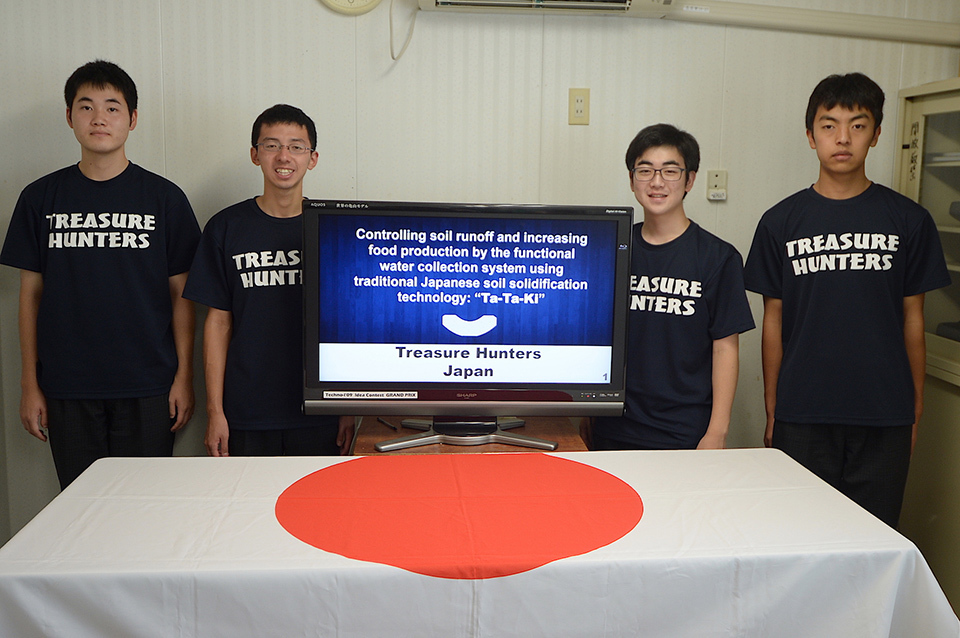
The members of Treasure Hunters at the online presentation for the Stockholm Junior Water Prize. From left to right: NAKATSUTSUMI Yasuhito, MATSUHASHI Hiroki, MIYAKI Takuma, and TAMURA Yusei.
As indicated by the goal of “zero hunger” mentioned in the Sustainable Development Goals (SDGs), creating stable supplies of food is a global challenge. There are quite a few regions in the world experiencing difficulties in increasing food production, owing to the inability to secure water for agricultural use and soil degradation caused by surface runoff during the rainy season. West Africa is one such region.
A system developed by a team of high school students from Japan, however, might provide a solution to this problem. The students, part of the Environmental Research Team of Aomori Prefectural Nakui Agricultural High School, devised a system to retain rainwater that applies tataki, a traditional Japanese soil-solidification technology. Tataki involves adding slaked lime and magnesium chloride to red clay and gravel, and then mixing, pounding, and hardening the compound. The resultant increase in viscosity and strength has led to the use of tataki in a variety of venues, ranging from the earthen floors of traditional Japanese homes to irrigation channels and the floors of sumo rings.
West African farmers use a traditional system known as zai, in which they dig earthen pits to collect water. A drawback to the system, however, is its tendency toward soil erosion, as the pits are made simply by mounding soil. The Japanese students had learned in class about the challenges to zai, so they took the initiative to study ways to improve the system. The idea for using tataki came from the earthen floor at the home of one of the student’s grandfathers. It was a suitable choice because it can be made from readily-available materials, while providing the needed durability.
The students searched for a design that could facilitate water retention, and after much trial and error, decided upon a wing shape. They also reproduced African soil and water quality conditions when conducting tests to confirm if tataki would work in Africa. In the process, they discovered that the nutrients mixed in during the tataki process gradually seeped out into the surrounding ground. Using that to their advantage, they modified the tataki mixture to include phosphoric acid, which is lacking in West African soil, in order to enrich the soil.
The students’ project won the Grand Prix of the 2020 Stockholm Junior Water Prize, awarded to an outstanding water-environment project conducted by young people. Team member MIYAKI Takuma recalls, “I had been impressed by the other countries’ excellent presentations, so I was totally overjoyed when the presenter, Crown Princess Victoria of Sweden, uttered the word ‘Japan.’”
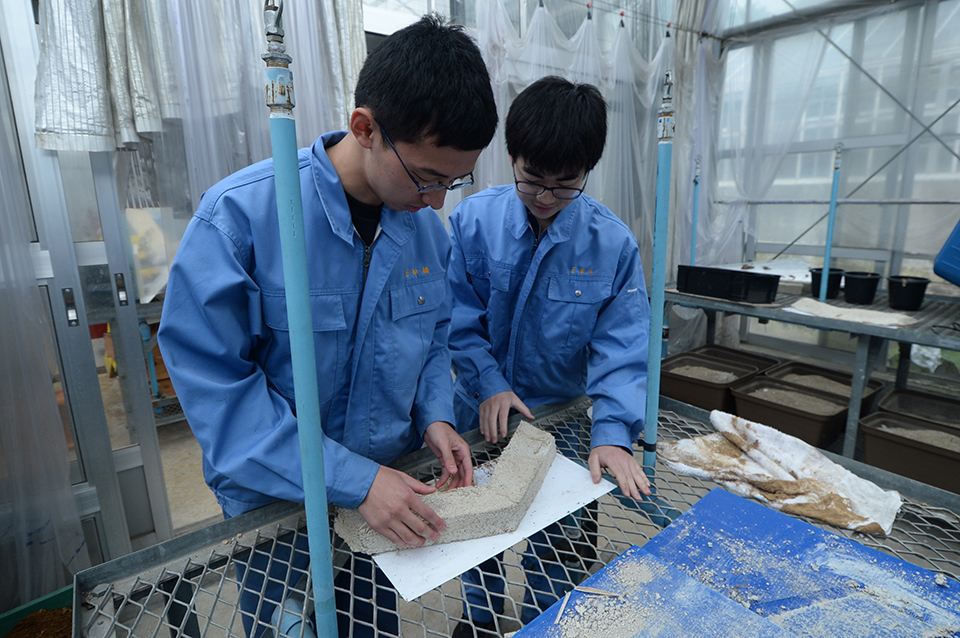
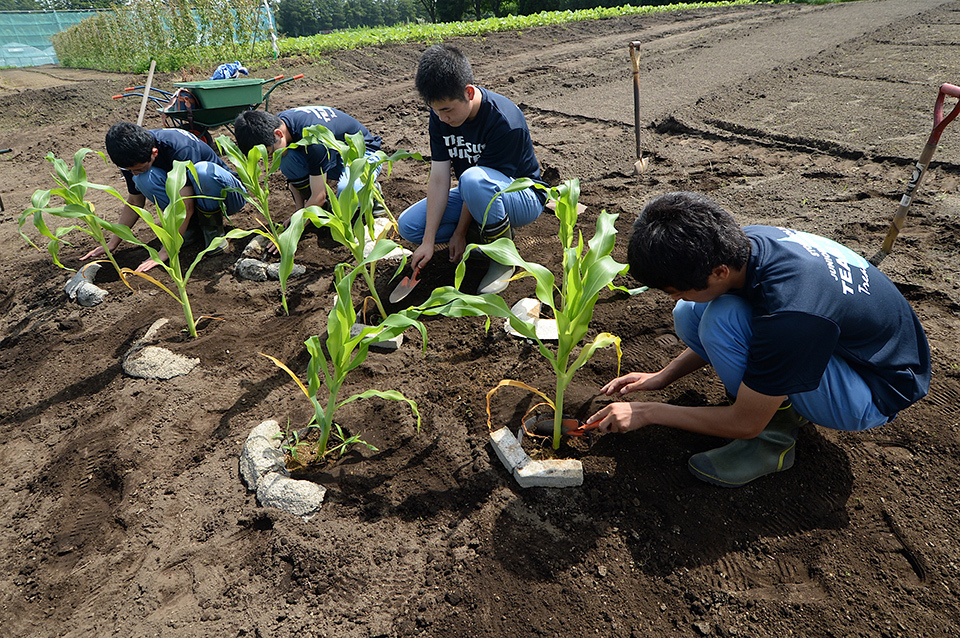
It took the students a year and a half to conduct their research. Although they found it difficult to harden the materials sufficiently, they confirmed that tataki would remain durable even after one year.
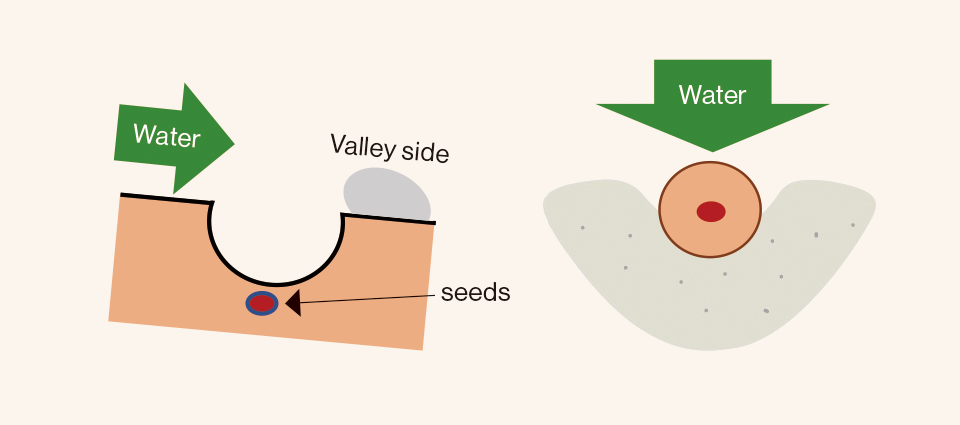
Tataki arranged in a semicircular shape is installed on the valley side of the hole to catch the water runoff. The students devised an optimal shape to retain the water more fully and curb soil erosion.
The team’s name is Treasure Hunters. According to NAKATSUTSUMI Yasuhito, “We chose the name with the hope that our technologies would be treasured by people around the world.” In 2018, their high school had come in as runner-up for the Stockholm Junior Water Prize, for a project employing a natural water-purification method combining plants with high transpiration rates and microorganisms. Having watched their seniors rack their brains to find a solution to a global problem inspired Treasure Hunters to do the same two years later, and their efforts were duly rewarded.
MATSUHASHI Hiroki analyzes the reason for their win: “Although tataki — a process of hardening soil by mixing it with water—is a traditional Japanese technology, it can be easily applied anywhere in the world. I think it got high marks for being an inexpensive and simple approach that can support sustainable agriculture.” An increasing number of inquiries have come in regarding their study, and talks are also underway with a nonprofit organization active in Tanzania.
The members of Treasure Hunters will graduate from high school this spring. TAMURA Yusei, who will be going on to a vocational school for agriculture, speaks of his future aspirations ambitiously: “I am interested in the world’s agricultural issues, and want to do my part in contributing to their solutions.” Given how these young people devoted themselves to studying the local environment and adapting a Japanese method to suit West African conditions, they will undoubtedly continue to blaze new trails with their inquisitive minds in the future to find solutions to agricultural challenges.
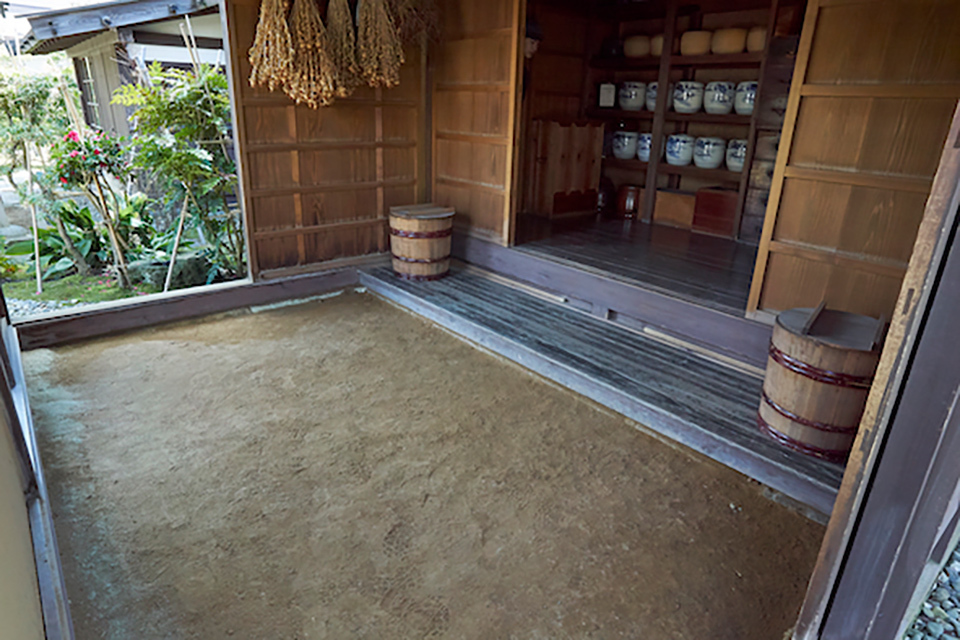
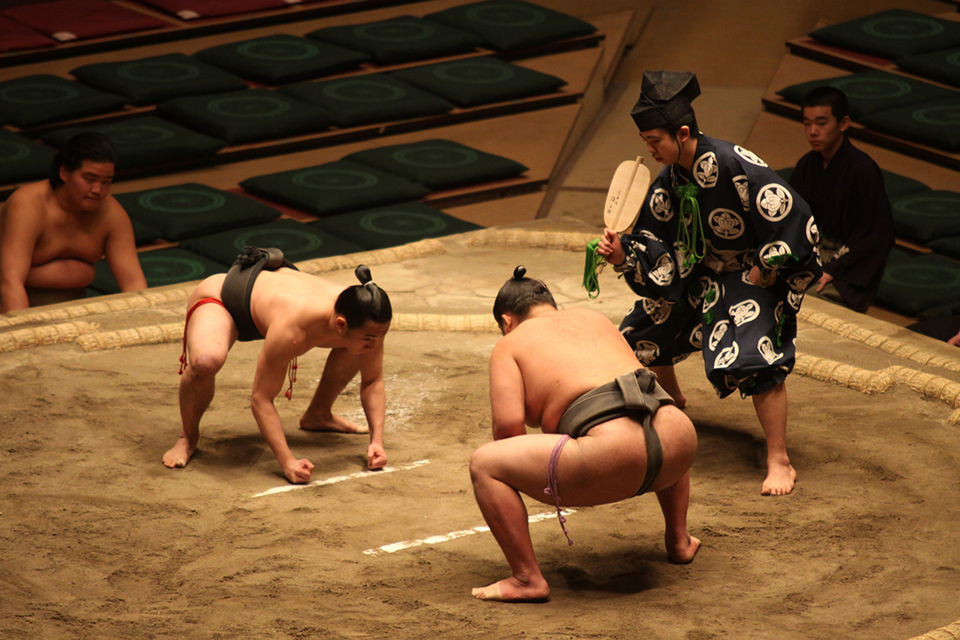
Tataki has been used from the days of old for earthen floors in traditional Japanese houses (left) and the floors of sumo rings (right).






























